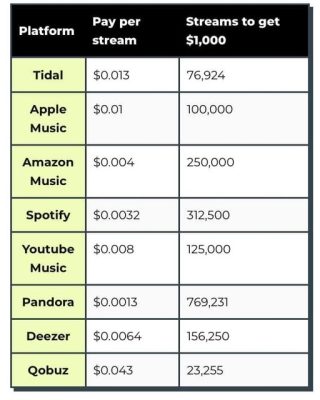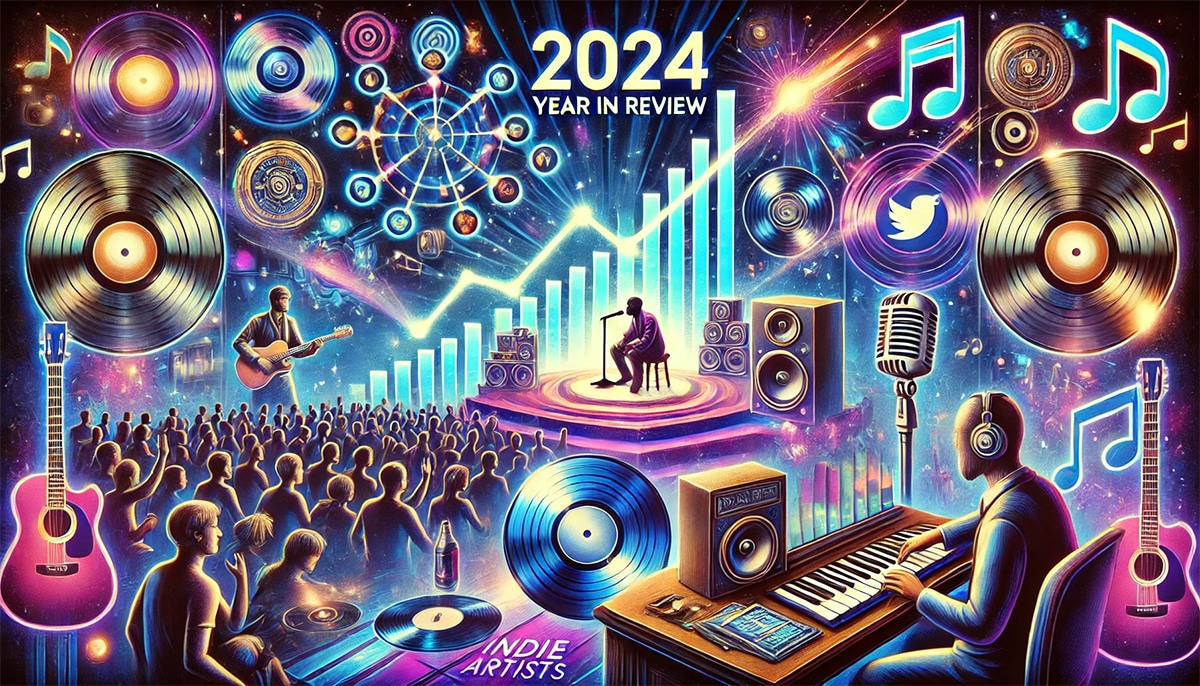2024 Year in Review For the Music Industry and How it Affected the Indie Artist
Making a Scene – 2024 Changes in the Music Industry Affecting Independent Artists
Streaming Revenue and Spotify’s Policy
 Spotify announced as of January of 2024 changes to their payment model, ceasing all payments for tracks that do not achieve 1,000 streams. An Interesting fact is according to ChartMetric 2023 stats 81% of the music on Spotify was under 1,000 Streams! This has impacted independent artists who rely on smaller, niche audiences, as these streams often represent a significant portion of their income. The move favors higher-performing tracks and established artists, while creating financial pressure for up-and-coming musicians.
Spotify announced as of January of 2024 changes to their payment model, ceasing all payments for tracks that do not achieve 1,000 streams. An Interesting fact is according to ChartMetric 2023 stats 81% of the music on Spotify was under 1,000 Streams! This has impacted independent artists who rely on smaller, niche audiences, as these streams often represent a significant portion of their income. The move favors higher-performing tracks and established artists, while creating financial pressure for up-and-coming musicians.
Consolidation of Revenue Streams
Artists increasingly rely on other platforms, such as Bandcamp, to supplement the gap in income caused by diminishing streaming payouts. Growing critiques of centralized (corporate or individual owned) streaming services such as Spotify, Pandora, Apple Music, Amazon, Youtube, etc as unsustainable business model for independent creators and the music industry as a whole.
Challenges with Traditional Streaming Platforms
Platforms like Spotify, Apple Music, YouTube, etc pay only fractions of a cent per stream, making it difficult for independent artists to earn a living from recorded music alone. Algorithm-driven recommendation systems favor popular or mainstream music, often burying independent artists in search results or curated playlists.
Rise of Decentralized Business Models
 Blockchain and Decentralized Streaming Platforms: Platforms like Audius and Resonate are utilizing blockchain technology to create transparent, direct fan-to-artist payment systems. These services ensure artists retain a larger share of revenue, cutting out intermediaries like record labels or centralized platforms. Blockchain-based smart contracts automatically distribute royalties, ensuring timely and accurate payments to artists and collaborators. Decentralized platforms empower artists to maintain ownership over their music and data, a significant shift from traditional streaming services.
Blockchain and Decentralized Streaming Platforms: Platforms like Audius and Resonate are utilizing blockchain technology to create transparent, direct fan-to-artist payment systems. These services ensure artists retain a larger share of revenue, cutting out intermediaries like record labels or centralized platforms. Blockchain-based smart contracts automatically distribute royalties, ensuring timely and accurate payments to artists and collaborators. Decentralized platforms empower artists to maintain ownership over their music and data, a significant shift from traditional streaming services.
Direct Fan-to-Artist Revenue Streams
One of the biggest problems with the music industry has been the fact that it has always had a large and sometimes unmanageable middleman structure that served as an economic buffer between the artist and their fans. The idea of an Decentralized business model for the music industry will create a direct fan to artist revenue stream that would put more money into the artists pocket.
Tokenized Economy: Some decentralized platforms such as Songvest, Restifi, etc. introduce fan tokens or NFTs (non-fungible tokens), enabling fans to invest in an artist’s success by allowing them to own a part of either the streaming or publishing royalties of an artist’s song as well as exclusive content, which results in giving artists upfront funding. Examples include NFT releases of albums or exclusive digital content. Artists can build closer relationships with fans through platforms that offer behind-the-scenes content, live-streamed performances, direct interactions and/or Investment Opportunities. I believe that to make this type of system popular with the general public, we would need to isolate the crypto aspect of tokenization and allow the general public to operate in familiar currency.
Shifting Industry Norms and Independent Artist Advocacy
Initiatives like #BrokenRecord and #WAM (We are the Music) highlight the challenges faced by independent artists, pressuring streaming services to reconsider payment structures. Independent artists are increasingly forming collectives or cooperatives to share resources, distribute music, and amplify their voices in the industry.
Conclusion
While Spotify’s payment threshold changes and traditional streaming models reducing the payments present challenges for independent artists, the rise of decentralized business models, blockchain-powered platforms, and direct fan-to-artist revenue streams offer exciting opportunities.
Independent artists must adapt by embracing diversified income strategies, new technologies, and closer fan engagement to thrive in an evolving music industry.
In 2024, artists are leveraging technology in several innovative ways. They are utilizing artificial intelligence to analyze trends, allowing them to create more tailored content for their audiences. Social media platforms are employed for direct engagement with fans, and blockchain technology is being used for transparent royalty distribution, ensuring artists are fairly compensated. Additionally, many artists are using data analytics to better understand listener preferences, guiding their marketing and creative decisions.
Discover more from Making A Scene!
Subscribe to get the latest posts sent to your email.









